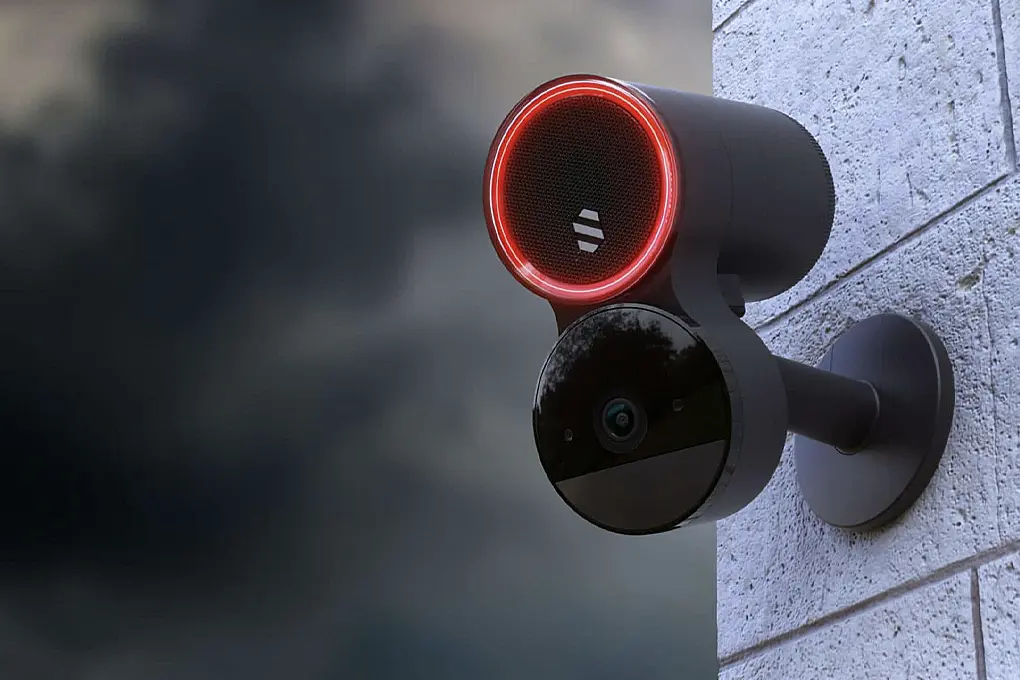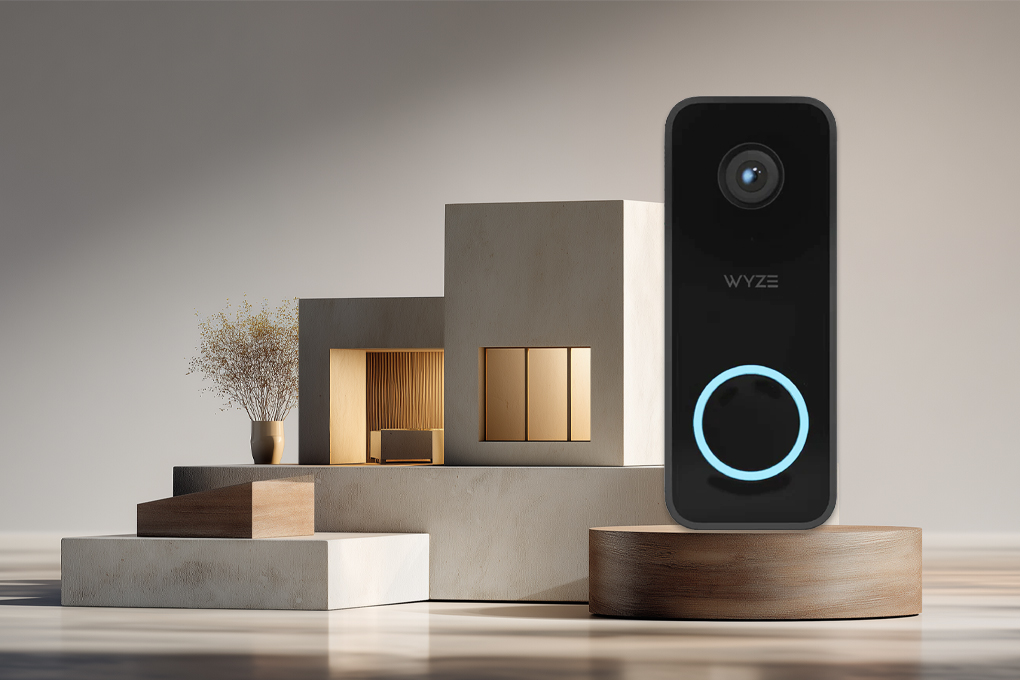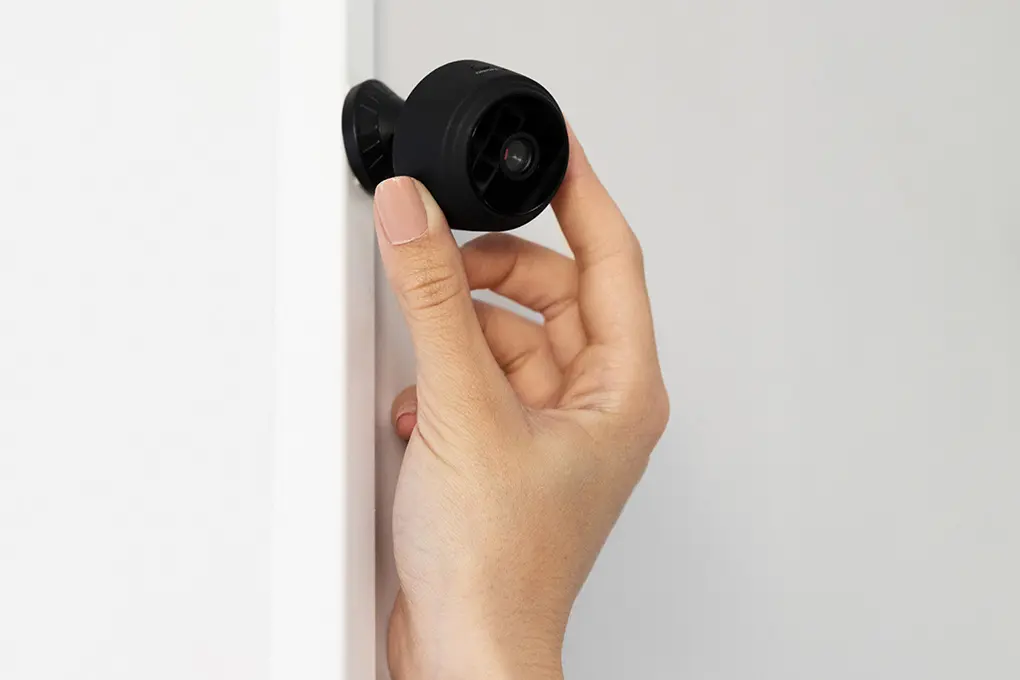As a renter, creating a secure living space often feels like walking a tightrope. You want thorough protection, but you’re limited by lease restrictions, temporary living situations, and the reality that you can’t make permanent changes to the property. Yet the need for security remains just as important as it is for homeowners.
Recent data shows that apartments and rental units experience break-ins at rates up to 85% higher than single-family homes. Despite this sobering statistic, 28% of apartment complexes do not have any security measures in place. This gap between risk and protection exists largely because many renters don’t realize how many effective, non-destructive security options are available today.
This can lead to security incidents occurring, including this recent one where a burglar broke in through the patio door of an apartment and burglarized the unit.
Another recent event that illustrates the need for stronger apartment security is the recent
break-in and burglary of Slim Thug’s apartment unit in Houston, where burglars made off with an undisclosed amount of jewelry, money, and other items. This shows how not only low-income individuals are at risk of having their apartments broken into, but even high-profile individuals can be victims.
At Batten Home Security, we’ve compiled this comprehensive security checklist specifically for renters, focusing on solutions that won’t damage property, violate lease agreements, or require professional installation. Keep reading our home security checklist to keep your apartment, belongings, and your family safe from burglars and criminals.
Let’s start by understanding your apartment’s current security features.
Table of Contents
- Key Takeaways
- Understanding Your Apartment’s Existing Security Features
- Non-Destructive Door Security Solutions
- Window and Sliding Door Protection
- Wireless Security Systems for Renters
- Camera Solutions for Renters
- Creating a Secure Digital Environment
- Fire and Environmental Safety for Renters
- Emergency Planning for Apartment Dwellers
- Building Community Security Awareness
- Cost-Effective Security for Budget-Conscious Renters
- Apartment Security for Special Situations
- Moving Your Security System
- A Firsthand Account of Securing an Apartment
- Conclusion: Layered Security for Complete Protection
- Frequently Asked Questions
Key Takeaways
- Apartment renters face unique security challenges due to lease restrictions, shared spaces, and higher burglary risks compared to homeowners.
- Effective apartment security relies on layering physical, digital, and environmental protections without making permanent changes to the property.
- Modern renter-friendly security products—like wireless systems, smart locks, and temporary camera mounts—allow for full protection with zero property damage.
- Securing entry points (doors, windows, and sliding doors) is essential, but must be paired with building-level awareness and landlord cooperation.
- Fire safety, water detection, and emergency planning are just as critical as burglary prevention for a truly comprehensive security setup.
- Strong digital hygiene, including network security and smart device management, plays a growing role in keeping your apartment protected.
- Renters can achieve home-level protection without overspending by starting with affordable, high-impact tools and expanding their setup over time.
Understanding Your Apartment’s Existing Security Features
Before adding new security measures, take inventory of what’s already in place. Many renters overlook existing security features or don’t realize when critical components are missing or outdated.
Start by thoroughly examining your apartment’s current security infrastructure. Ask yourself, “What works well, and what needs improvement?” This assessment will help you prioritize your security upgrades and avoid duplicating features that are already functioning effectively.
Doors and Entry Points Assessment
Your apartment’s entry points are the first line of defense against unwanted visitors. Beyond the obvious front door, consider all possible ways someone could enter your space:
- Examine all exterior doors (including patio and balcony doors). Do they have solid cores and secure frames?
- Check window locks on all floors, especially ground-level windows
- Inspect sliding door tracks and locks for vulnerabilities
- Note any connecting doors to common areas or adjacent units
- Verify that fire escapes or emergency exits don’t create security vulnerabilities
If your assessment reveals concerning gaps in basic security, address these with your landlord before investing in supplemental measures.
Many jurisdictions require landlords to provide certain minimum security features, such as deadbolts on exterior doors and functioning locks on windows. This is especially important for smaller complexes, as properties with under ten apartment units are at the highest risk of burglary.
Building Security Review
Your apartment’s security extends beyond your individual unit to include building-wide measures:
- Does your building have controlled access (keycards, doorman, intercom systems)?
- Are common areas like laundry rooms, mail rooms, and parking garages properly secured?
- Is there security camera coverage in entryways, hallways, and parking areas?
- How is visitor access managed?
- What is the condition of exterior lighting around the building?
Understanding the full picture of your building’s security helps you identify where personal security measures are most needed. If building security is robust, you might need fewer supplemental measures inside your unit.
On the other hand, if building security is minimal, you’ll want to be more thorough with your apartment-specific precautions. After all, the average loss due to burglaries is well over $2,300, with only 13% of burglaries being solved, illustrating the need for comprehensive security measures to be taken.
Now that we’ve assessed your apartment’s security, let’s talk about the components of the best apartment security for renters, and how you can keep your home safe.
Non-Destructive Door Security Solutions
The front door remains the most common entry point during break-ins, with roughly 34% of burglars entering through it. Reinforcing your door security without damaging the door or frame is essential for renters who want to enhance protection without violating lease agreements.
Modern door security solutions can significantly strengthen your entryways without requiring
permanent installation. These temporary but effective measures can be installed and removed when you move, leaving no trace while providing substantial protection in the meantime.
Portable Door Locks and Reinforcement
Several innovative, renter-friendly door security options can be implemented without tools or permanent changes:
- Portable door locks like the Addalock or DoorJammer create a secondary physical barrier that prevents the door from opening even if the main lock is bypassed
- Door reinforcement plates distribute force across a larger area, making kick-ins more difficult
- Security bars that brace against the floor add another layer of protection
- Door wedge alarms serve double duty by physically blocking the door while sounding an alarm if disturbed
These solutions typically require no drilling or permanent mounting, making them ideal for rental situations. Many can be installed in seconds and removed just as quickly when you need to exit.
Smart Lock Options for Renters
Smart locks have greatly improved door security, and renters can now benefit from this technology without permanent modifications:
- Smart lock adapters fit over existing deadbolts without replacing them
- Retrofit smart locks that attach to the interior portion of your existing lock
- Bluetooth-enabled lockboxes for spare keys that can be controlled via smartphone
Smart locks offer valuable features beyond basic security, including remote locking/unlocking, temporary access codes for visitors, and activity logs that tell you when your door was accessed. The SimpliSafe Smart Lock is particularly well-suited for renters, as it integrates with wireless security systems while maintaining your existing keyed lock.
Window and Sliding Door Protection
Windows represent another vulnerable entry point, especially on ground floors or near fire escapes. According to FBI data, approximately 23% of break-ins occur through first-floor windows. Sliding doors present similar risks due to their often flimsy locking mechanisms.
Fortunately, numerous temporary window security solutions exist that provide substantial protection without drilling or permanent installation. These measures can be easily removed when you move out, making them perfect for rental situations.
Temporary Window Security Devices
Several non-invasive window security options are available to renters:
- Adhesive window pin locks that prevent windows from opening beyond a set point
- Window wedge alarms that detect tampering and emit a loud alert
- Security bars and adjustable window locks that use pressure mounting rather than screws
- Window security film that makes glass more difficult to break and holds shattered glass together
For sliding windows and doors, consider these specialized solutions:
- Track locks that prevent sliders from moving
- Security bars that fit in the track
- Door jammers specifically designed for sliding doors
These solutions provide robust protection without requiring permanent installation, allowing you to enhance security while remaining within your lease terms.
Wireless Security Systems for Renters
The security system market has evolved dramatically to accommodate renters’ needs. Today’s wireless, portable systems offer comprehensive protection without drilling or permanent mounting.
A majority of new security system installations now use wireless technology, with rental-friendly features becoming increasingly common.
Wireless security systems combine multiple security elements, such as motion detection, entry sensors, cameras, and professional monitoring, into a cohesive protection strategy that can move with you from apartment to apartment.
Key Components for Rental-Friendly Systems
When selecting a wireless security system for your apartment, prioritize these renter-friendly features:
- Peel-and-stick sensors that don’t damage walls or trim when removed
- Battery-powered components that don’t require electrical wiring
- Portable base stations that connect via cellular or Wi-Fi networks
- No-contract or month-to-month monitoring options
- Easy self-installation with no specialized tools required
Top systems that meet these criteria include Ring Alarm, SimpliSafe, and Abode, all of which offer starter kits specifically designed for apartment dwellers. The Ring 8-piece Home Security System provides comprehensive coverage for most apartments while requiring no permanent installation.
Monitoring Options for Apartment Security
Security system monitoring provides an extra layer of protection by ensuring emergency services are contacted even when you’re not able to respond to an alarm:
- Self-monitoring through smartphone apps (free but requires your constant attention)
- Professional monitoring services (typically $10 to $30 monthly with no long-term contract)
- On-demand monitoring that can be activated for short periods when you’re traveling
Many renters opt for systems that offer flexible monitoring options, allowing them to adjust protection levels based on their needs and budget. Systems with on-demand monitoring are particularly well-suited for renters who may not want to commit to ongoing monthly fees.
Camera Solutions for Renters
Security cameras provide both deterrence and evidence collection capabilities. Recent studies show that visible security cameras reduce break-in attempts by up to 50%. For renters, the challenge lies in installing effective camera coverage without damaging walls or violating privacy laws.
Today’s wireless cameras offer numerous mounting options and features specifically designed for rental situations. From temporary mounts to battery power, these cameras provide robust security without permanent installation.
Non-Invasive Camera Mounting Options
Several camera mounting approaches work well in rental properties:
- Freestanding cameras that sit on shelves or furniture
- Tension rod mounts that use pressure rather than screws
- Magnetic mounts for metal surfaces
- Adhesive mounting strips designed for clean removal
- Clamp mounts that attach to furniture or fixtures
These mounting solutions allow for comprehensive camera coverage without drilling holes or damaging surfaces. When selecting cameras for your apartment, consider models specifically designed for renters, such as the EufyCam series or Arlo Essential, which offer multiple mounting options.
Privacy Considerations for Apartment Cameras
When installing cameras in an apartment, privacy becomes a crucial consideration, as you do not want to infringe on the privacy of others or break any laws:
- Position cameras to avoid capturing common areas or neighboring units
- Be aware of local laws regarding video recording in residential settings
- Consider cameras with privacy shutters or modes for when you’re home
- Use appropriate settings for shared spaces like entryways or hallways
Proper camera placement ensures you maintain security without violating neighbors’ privacy or building policies. In shared buildings, doorbell cameras and peephole cameras represent a good compromise, providing entry monitoring without capturing broader building areas.
Creating a Secure Digital Environment
Physical security represents only part of a comprehensive apartment protection strategy. As smart home devices become more prevalent, digital security grows increasingly important for renters.
A survey found that 65% of renters use at least one smart home device, creating potential digital vulnerabilities alongside their benefits. Interesting to note is that those renting houses are more likely to have smart home devices than those renting apartments.
Digital security measures protect both your personal information and the physical security systems that guard your apartment. By implementing proper digital safeguards, you ensure that your security devices enhance rather than compromise your protection.
Securing Your Home Network
Your wireless network serves as the backbone for many security devices, making its protection essential. Here’s how to secure your home network:
- Use strong, unique passwords for your Wi-Fi network
- Enable WPA3 encryption if your router supports it
- Create a guest network for visitors and less-secure devices
- Regularly update router firmware
- Consider a VPN for additional protection
A secure network prevents attackers from accessing your security cameras, smart locks, and other connected devices. For comprehensive protection, consider solutions like Total Digital Security that protect all your connected devices.
Smart Device Security Best Practices
As you add security cameras, smart locks, and other connected devices to your apartment, follow these best practices to ensure maximum safety:
- Update device firmware regularly
- Use unique, strong passwords for each device account
- Enable two-factor authentication when available
- Disable features you don’t use
- Verify privacy settings on all devices
These measures prevent unauthorized access to your security systems and protect sensitive information captured by your devices. For more detailed guidance, review our guide on securing IoT devices in smart homes.
Fire and Environmental Safety for Renters
While intrusion prevention typically dominates security discussions, fire and environmental hazards pose equally serious risks to apartment dwellers.
In fact, apartment residents face higher fire risks than single-family homeowners due to shared walls, combining heating systems, and the actions of neighbors.
Comprehensive apartment security must include measures to detect and respond to fire, carbon monoxide, water leaks, and other environmental dangers. As a renter, you can implement numerous non-permanent solutions to protect against these threats.
Portable Fire Safety Equipment
Every apartment should include these essential fire safety tools:
- Smoke detectors with long-lasting batteries (supplement building systems)
- Carbon monoxide detectors, especially near sleeping areas
- Portable fire extinguishers rated for home use
- Fire escape ladders for upper floors
- Emergency flashlights and glow sticks
The LifeSafe Portable Fire Extinguisher provides compact, effective fire protection without the bulk of traditional extinguishers. For comprehensive detection, consider the X-Sense Smoke and Carbon Monoxide Detector, which offers reliable protection without permanent installation.
Water and Leak Detection
Water damage represents one of the most common and costly apartment disasters. Proactive leak detection can prevent extensive damage:
- Wireless water leak sensors near plumbing fixtures, water heaters, and appliances
- Smart water shutoff devices that automatically stop leaks (for units with accessible water mains)
- Temperature sensors that alert you to freezing conditions that could lead to burst pipes
Products like the Abode Water Leak Sensor can detect leaks early, preventing extensive damage and potentially saving you from liability for water damage to your unit or those below you.
Emergency Planning for Apartment Dwellers

Even the best security systems cannot prevent every emergency. Comprehensive apartment security includes preparation for situations where evacuation or sheltering in place becomes necessary.
Despite this necessity, a recent study found that apartment renters are much less likely to have an emergency preparedness plan in place than homeowners.
Creating and practicing emergency procedures specifically tailored to apartment living helps ensure you can respond effectively during crises. These preparations complement your physical security measures to provide comprehensive protection.
Creating an Apartment Emergency Plan
Develop a clear emergency response strategy for various scenarios:
- Document multiple evacuation routes from your apartment
- Identify meeting points outside the building
- Maintain an emergency contact list including building management
- Determine locations of building emergency equipment (fire extinguishers, alarms)
- Plan for pet evacuation if applicable
Share this information with all household members and practice your evacuation routes periodically. Consider creating a digital and physical copy of your plan for easy reference.
Emergency Supply Kit Essentials
Maintain a compact emergency kit suitable for apartment storage, which includes the following items:
- Three-day supply of non-perishable food and water
- Flashlights and extra batteries
- First aid supplies
- Essential medications
- Cash and important documents
- Portable phone charger
- Multi-tool and basic tools
For apartments with limited storage space, consider compact emergency kits like the FrogCo Survival Gear for Emergencies, which provides essential supplies in a space-efficient package.
Building Community Security Awareness
Apartment security extends beyond individual units to include the entire building community. Collaborative security awareness among neighbors creates a more comprehensive protection network than any single resident could achieve alone.
By encouraging positive relationships with neighbors and building management, you can enhance security while building a supportive community. These social connections complement your physical security measures to create a more comprehensive protection strategy. Studies show that communities with neighborhood watches experience up to 16% less crime than those without.
Neighborhood Watch for Apartments
Adapt traditional neighborhood watch concepts to apartment settings to increase overall security:
- Create a building security group chat or email list
- Establish package retrieval assistance to prevent theft
- Organize regular security walks through common areas
- Share information about suspicious activity
- Report maintenance issues that could impact security
These collective efforts extend your security awareness beyond what you could monitor personally. Even simple steps like notifying neighbors when you’ll be away can significantly enhance building security.
Working with Landlords on Security Improvements
Approach building management constructively regarding security concerns through the following means:
- Document specific issues with photos when possible
- Research local requirements for rental property security
- Propose specific, reasonable solutions
- Highlight benefits to all parties (reduced liability, property protection)
- Consider organizing with multiple tenants for significant concerns
While you cannot force landlords to make changes, a constructive, evidence-based approach often yields positive results. For significant security gaps, reference our guide on security systems for rental properties to identify reasonable expectations for landlord-provided security.
Cost-Effective Security for Budget-Conscious Renters
Comprehensive apartment security doesn’t require a substantial financial investment. Strategic prioritization allows you to implement effective protection measures regardless of budget constraints.
Industry experts recommend focusing on high-impact, low-cost solutions before considering more expensive options.
By starting with foundational security measures and gradually adding components based on specific needs, you can build a robust security system that protects your apartment without breaking your budget.
Budget-Friendly Security Priorities
If working with limited resources, implement these high-value security measures first:
- Portable door reinforcement (door jammers, security bars)
- Window pin locks and sliding door blocks
- Motion-sensor lighting for dark areas
- Basic security cameras covering main entry points
- Door/window alarms with local alerts
These foundational measures address the most common vulnerabilities while requiring minimal investment. The Wyze Floodlight Cam offers exceptional value for entry-level security cameras while providing essential monitoring capabilities.
Progressive Security Implementation
As budget allows, enhance your system with these additional components:
- Expand camera coverage to secondary entry points
- Add smart notifications and remote monitoring capabilities
- Implement professional monitoring services
- Add environmental sensors (smoke, CO, water)
- Integrate smart lighting for automated security routines
This phased approach allows you to build comprehensive security over time without requiring a large upfront investment. Many security companies offer expandable systems that let you start with basic protection and add components as needed.
Apartment Security for Special Situations
Different living arrangements and lifestyles create unique security challenges for renters. Tailoring your security approach to your specific circumstances ensures appropriate protection without unnecessary measures.
Customization represents a key advantage of modern security systems, allowing precise alignment with your particular needs.
By addressing the specific security challenges associated with your living situation, you create a more effective protection strategy than a one-size-fits-all approach could provide.
Security for Frequent Travelers
For renters who regularly travel, consider these specialized security measures:
- Smart lighting with randomized schedules to simulate occupancy
- Indoor cameras with motion detection for unexpected activity
- Remote-managed smart locks for emergency access
- Automatic notification systems for security events
- Package delivery management solutions
These measures provide both monitoring and deterrence during absences. For comprehensive guidance, review our article on preparing your home for vacation.
Pet-Friendly Security Considerations
If you have pets, adapt your security system accordingly:
- Motion sensors with pet-immune settings to avoid false alarms
- Interior cameras with two-way communication to check on pets
- Temperature monitors to ensure HVAC systems remain functional
- Smart feeders and water dispensers for extended absences
- Entry systems that allow pet sitter access without sharing keys
These adaptations ensure your security system protects rather than inconveniences your pets. Products like security cameras designed specifically for pet monitoring offer specialized features for pet owners.
Moving Your Security System
One of the greatest advantages of renter-focused security systems is their portability. Modern wireless systems can move with you from apartment to apartment, preserving your security investment across multiple residences.
When selecting components, prioritize this portability to maximize long-term value.
Planning for eventual relocation ensures your security investment continues providing protection regardless of where you live. With proper preparation, your entire system can be disassembled, moved, and reinstalled in a new apartment within a single day.
Disassembly and Reinstallation Best Practices
Follow these guidelines when relocating your security system:
- Document your current setup with photos before disassembly
- Label components and their corresponding sensors
- Back up any system settings before powering down
- Use original packaging when available for safe transport
- Test components before reinstallation to identify any damaged items
Proper planning prevents confusion during reinstallation and minimizes system downtime. Many modern systems retain their programming even when powered down, simplifying the moving process.
Adapting Your System to New Spaces
When moving to a new apartment:
- Conduct a fresh security assessment of the new space
- Identify different vulnerability points requiring protection
- Adjust camera and sensor placement for the new floor plan
- Update emergency plans and contact information
- Consider additional components if the new space has different security needs
This adaptation ensures your existing system provides optimal protection in your new home. For comprehensive guidance on security system relocation, consult our article on mobile living security needs.
A Firsthand Account of Securing an Apartment
Here’s a firsthand account of how an individual secured their apartment using many of the same tips and tools discussed here today.
I used to live in a small apartment on the ground floor—nothing fancy, but it was home. One night, while I was out, someone broke in through the back patio door. They didn’t take much, but the feeling of being violated stuck with me far longer than the loss itself. At the time, I hadn’t thought much about security. The door had a simple latch, the windows were unlocked, and there were no cameras in or around the building. That break-in was a wake-up call.
After that, I got serious. I started with portable door locks and a sliding door security bar—non-invasive but incredibly effective. I added peel-and-stick window alarms and a wireless camera I mounted with adhesive strips. No drilling, no lease violations, and suddenly my place felt safer. I also upgraded my Wi-Fi security and used smart plugs and timers to make it look like I was home even when I wasn’t.
The biggest change? Peace of mind. I haven’t had another break-in since, and I’ve taken those same tools with me to every apartment I’ve lived in since then. Security doesn’t have to be permanent to be powerful because you just need the right setup.
Conclusion: Layered Security for Complete Protection
Creating a comprehensive security system for your apartment involves combining multiple protection layers rather than relying on a single solution. This layered approach ensures that if one security measure fails, others remain in place to provide ongoing protection. Security experts consistently recommend this strategy for both homeowners and renters.
By implementing the measures outlined in this guide, you can create a robust security system tailored to your specific apartment, building, and lifestyle, all without violating lease agreements or making permanent modifications to the property.
Remember that apartment security remains an ongoing process rather than a one-time setup. Regularly assess your security needs, update your systems as technology improves, and adapt your approach as your living situation changes. With proper attention and the right components, your rental can be just as secure as any owned home.
Want peace of mind for your apartment? Browse Batten’s expert-recommended home security tools — from smart cameras to alarm systems — and start protecting what matters most.
Frequently Asked Questions
Are Wireless Security Systems Reliable in Apartments?
Yes, today’s wireless systems use battery power and Wi-Fi or cellular networks to provide dependable protection without installation hassles.
Can I Install a Camera Without Drilling Holes?
Absolutely. Use adhesive strips, clamps, tension rods, or shelf placement to set up cameras without damaging walls.
Is It Legal to Use Smart Locks in Rental Units?
It depends on your lease. Smart lock adapters that leave the original lock intact are usually acceptable, but just check with your landlord.
How Can I Prevent Package Theft in Apartments?
Try smart lockboxes, security cameras aimed at your door, or coordinating with neighbours to collect packages quickly.
What’s the First Thing to Buy for Apartment Security?
A portable door lock or jammer is one of the simplest and most effective upgrades for renters starting from scratch.
Sources
- Apartment Communities: The Top 3 Security Concerns | Stealth Monitoring
- 71% of Apartment Renters in the U.S. Want More Security Precautions from Their Property Management
- Denton woman reports burglar busted through her apartment patio door | Blotter | dentonrc.com
- Slim Thug’s apartment hit by burglars in Downtown Houston, jewelry stolen
- Burglary Odds & Safe City Break-Ins | Prevent a Burglary Break-In
- Burglary Statistics
- Where Do Most Home Break-Ins Occur? – CEPRO
- Burglary Statistics in 2025 | The Zebra
- How surveillance cameras can help prevent and solve crime | Urban Institute
- Survey Reveals the Smart Home Technology Renters Want Most in 2022 – CEPRO
- How to Manage The Rise in Water Damage Insurance Claims
- The likelihood of having a household emergency plan: understanding factors in the US context | Natural Hazards
- The Power of Neighborhood Connections
- U.S. Justice Department: Does Neighborhood Watch reduce crime? – The Journalist’s Resource




